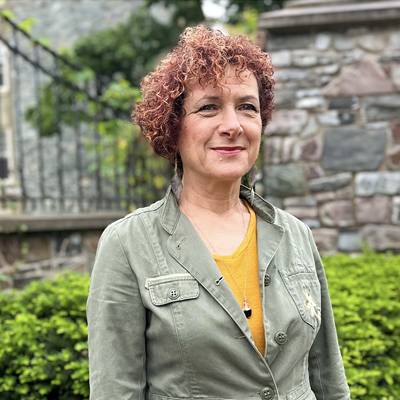Changes are afoot in the world of high and higher education in the SuperCity. At the end of May, the Nova Scotia Community College will close down its Bell Road campus for good, and send the wrecking ball in to flatten the 55-year-old school. The NSCC is spending the next two years and about $50 million building a new, much larger facility on the east side of the harbour, right beside the Nova Scotia Hospital. Then this summer, the province will start constructing a brand new peninsula high school out of the rubble of the old Bell Road school. Citadel High is scheduled to replace current rival stalwarts Queen Elizabeth High and St. Patrick’s in September 2006. There’s been a flurry of planning over what the new $21 million high school will look like, but the fate of the old schools is less clear.
Once the school board vacates them, surplused schools revert to municipal ownership, so essentially council has control over what will happen to St. Pat’s and QEH. Because of its prime Quinpool Road location, St. Pat’s is a potential windfall for SuperCity coffers and will likely be sold to a private developer. But don’t expect condos to rise in place of QEH. The school stands on Halifax Common land, protected by charter to be put to public purpose.
“There has been no determined outcome yet of what would go there,” says councillor Dawn Sloane. “It’s supposed to go back to public use, such as a greenfield or maybe a recreation centre.” Or a hospital expansion? Or a splashy new CBC building? The rumour mill abounds with possibilities. It’s an unknown that brings to mind another surplused school building with an equally uncertain future, the Bloomfield Centre, which is currently under review by the city. Depending on who you talk to, the community rec centre could wind up being a block of pink condos or a refurbished environmental prototype, complete with rooftop gardens and solar panels. It all ultimately depends on council, and what city staff and community members tell them they want.
Last fall the planning advisory committee for District 12 (Downtown) asked that a committee be formed to oversee the management of the Halifax Common in order to secure some community input over the fate of the chartered public lands. So far the city hasn’t moved on the request. The committee is needed for two reasons, says Sloane. “One is to make sure that the land is preserved, because it is the last greenspace—historical greenspace—for the former city of Halifax. And second, we need to know the plan, if we’re going to have this green space is it going to be used for recreation or something else?”
Demolition of the Bell Road campus is estimated at $500,000. Even so, says Nova Scotia Public Works spokesperson Dan Davis, a study found that renovating it to serve as a new high school would be too costly. Citadel High is slated to be a certified “green building” says Davis, meaning it will meet environmental and efficiency standards beyond the potential of the old college campus. The building was also “not practical to keep,” says Davis, “because of other issues, including accessibility, fire separation and classroom sizes.”
NSCC is moving out of the building for similar reasons. The college is currently undergoing a massive province-wide growth spurt, and the Bell Road campus was just too old and too small to work its way into the plan. The old Bell Road school also stands on Halifax Common land, which technically belongs to the HRM. The new Dartmouth waterfront campus is being built on provincial land. “Part of it was the cost of renovations to Bell Road,” says Bruce Tawse, dean of Applied Arts and New Media at NSCC. “And the fact that we don’t own the property… There comes a point where it’s just not economical or feasible to put money into renovating a 55-year-old building.”
About 1,800 students will start classes at the new Dartmouth campus in January 2007, with room for the enrollment to eventually grow to 2,500. (The peak at Bell Road was about 900.) The project is part of “the largest infusion of funding from the provincial government in education ever in its history,” says Tawse. A total of $123 million is being spent over several years on the province-wide NSCC expansion.
Even with the modernization and expansion, the biggest change for the college is arguably its new location on the Dartmouth waterfront. On your next ferry ride, just look eastward towards the Nova Scotia Hospital grounds (just down from the future location of the second Harbour Solutions sewage treatment plant). That mass of concrete and construction cranes perched on the edge will eventually become NSCC’s new metro campus. The Woodside ferry is a five minute walk from the site, and NSCC spokesperson Sara Napier says the college has started discussing both ferry and bus schedules with Metro Transit, in an effort to make the new campus as transit accessible as possible.
Completion of the project is still two years off, so in the meantime NSCC has squirrelled away students at its two other SuperCity campuses, Akerley, off Main Street in Dartmouth, and the Nova Scotia Institute of Technology on Leeds Street. The college is also opening a temporary satelitte campus in downtown Halifax, around the corner from the Mountain Equipment Co-op on Granville. About 200 students in graphic design, photography, digital imaging and screen arts will move into the newly renovated 20,000 square foot space.
Tawse is excited about the new waterfront facility. Unlike the Bell Road campus, which was built as a technical high school in the ’50s and later taken over by the college, the new building is “designed for teaching the programs that are in there. It will be a completely different environment than people will have experienced before.”
Citadel High will also present a completely different environment for peninsula teenagers. Scheduled to open its doors in September 2006, the new school will absorb the full student populations from both St. Patricks and QEH. Because of dwindling high school enrolment on the peninsula, the grand total is expected to be 1,200 students.
The local school steering team has been meeting since November 2004 to help plan for the school, but as other SuperCity communities have discovered in recent years, they just don’t build them like they used to. While both St. Pat’s (built in 1954) and QEH (built in 1941) have gymnasiums and auditoriums, the current provincial standards for new school construction dictate that Citadel High have one gymnasium and no auditorium. As if to compensate for its bare bones school building program, the province will allow for enhancements to new schools, as long as communities can pay for them themselves. So in effect, communities with the skills, time and resources to raise truckloads of cash on their own will have better schools than those without. The policy reads like a recipe for inequity in public education. But you can’t blame a community for trying.
Faced with the prospect of losing two auditoriums and a gym, a group of peninsula parents got busy, and so far they’ve been successful. After a great debate on whether or not municipal governments should be spending money on education (a provincial mandate), HRM council decided to chip in $1.8 million for a second “community” gym at the high school.
“Without a community push it would not have happened,” says Jay Lugar, chair of the fundraising team. “They were convinced it was a good thing to do and they stepped up wonderfully.” Now Lugar and team are focused on raising funds for an auditorium. “It’s going to be an awesome building. It’s going to blow everyone’s socks off. But of course we still have to finish paying for it.









